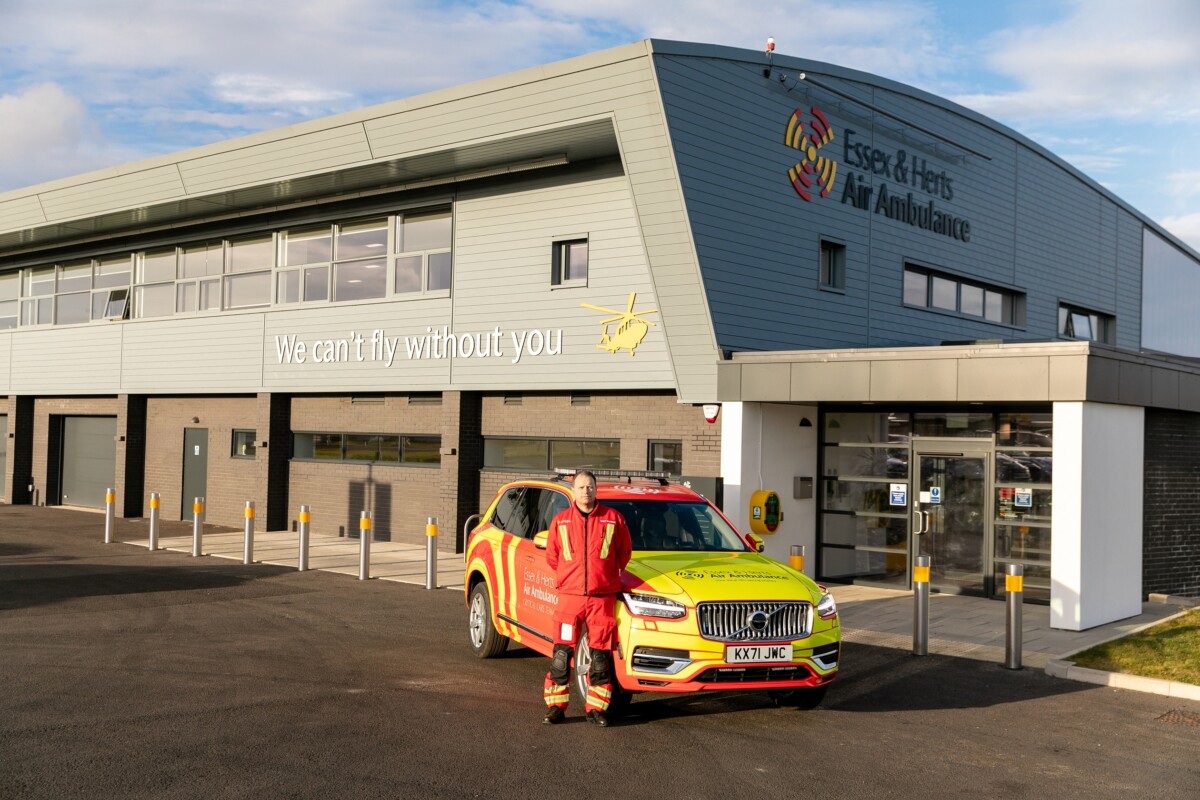Reducing environmental impact: charity approaches & top tips

For our April carbon zero focus, five charities explain their approach to reducing their carbon footprint in their fundraising, and beyond. We also include some ideas for reducing your own organisation’s impact on the environment.

Marie Curie
Fiona Chilton, Head of Mass Participation Fundraising at Marie Curie explains its approach and lists some of the ways it is working to be greener in fundraising. She says:
Advertisement
“Marie Curie is developing a Green Plan to embed sustainability across all our operations, including fundraising. We have moved to hybrid working and stay connected via technology including video conferencing and internal social media. We are beginning to electrify our fleet and are switching to Green Energy (electricity) next year.
“The fundraising teams have made several sustainable swaps including; FSC certified paper, sustainable printers, reducing mailouts, reducing plastic items and packaging, removing the dates on literature and merchandise where possible so they stay current.
“At Marie Curie we will work hard over the next few years to reduce our carbon footprint and switch to low carbon alternatives.”
Actions include:
- Reducing paper wastage (such as looking to improve how we forecast volumes for its Reminder packs and using data from Supporting Giving trends to reduce mailouts in a more targeted approach, sharing information to participants online rather than printed packs)
- Eradicating plastic incentives/throwaway items from its appeals and events (the charity recently sent out bookmarks/postcards and removed the plastic wrapping from Great Daffodil Appeal pins, and no longer use single use plastic items at events)
- Communicating with suppliers to learn more about their sustainability processes and including this as part of tender processes (such as using a printer who offsets paper production with the WLT, event organisers who offset carbon footprints)
- Optimising selection models/carrying out analysis to streamline supporter journeys (reducing mailing volumes where appropriate/not sending supporters too much direct mail)
- Testing one appeal pack across both Standard Value and Mid Value audiences rather than producing two separate packs (and therefore reducing print and production)
- Diversifying channels (reconsidering TY processes and looking to use more digital channels e.g. email/DRTV)
- Encouraging local events and sustainable transport, and including a digital attendance option where possible
- Donating to national parks after a UK Trek to support conservation and maintenance projects

Essex & Herts Air Ambulance (EHAAT)
To make its fundraising greener, Pam Withrington, Fundraising and Marketing Director, Essex & Herts Air Ambulance (EHAAT), says:
“We have moved to organising virtual events, which can deliver a greater ROI with a lower carbon footprint than large events.
“We are starting to introduce cashless donations alongside our traditional cash tins in shops, pubs, and other retail outlets. Over time, as we phase-in contactless and phase-out cash, this will mean less mileage to collect cash tins, and bring them back to our bases.
“Many of our initiatives (such as our Easter Quiz) mean we are inviting people to register, donate and join in online. This is cutting down the use of paper, postage and Royal Mail deliveries.
“In the charity as a whole, we are moving towards hybrid working with office staff spending 40% of their time working from home.”
However, retail is the biggest area for EHAAT due to the recycling of donated items.
Here, she says, the charity is:
- Selling all donated items either in its shops, or to either its rag merchant, recycling companies, or scrap metal dealers
- Reusing all the bags that donations have been dropped off in
- All boxes used to post ecommerce purchases are donated (e.g. old shoe boxes/Amazon boxes etc)
- Using a paperless process for signing up to Gift Aid
- Using biodegradable plastic in its price labelling guns
- Broken jewellery, watches and clocks are sold to Vintage Cash Cow
Looking ahead, it plans to change all price tags to biodegradable products, change to a green energy tariff, host reuse, recycle workshops in its warehouse or shops, start upcycling workshops in locations that have the space (superstores and warehouse), only use sustainable products in the shops, cut the cost of waste by reducing waste collections in all shops and the warehouse, and take part in Recycle Week each year.

Cats Protection
Cats Protection’s Head of Retail and Trading, Lesley Cross, explains some of the measures it has put in place to reduce its carbon footprint:
“Working towards a greener future is really important to Cats Protection. As such, we have put a number of measures in place to minimize our carbon footprint and we will keep evaluating and making improvements wherever we can.
“Currently we use a ‘zero to landfill’ recycling company who last year collected 621,814kg worth of rag items from our retail stores. We also run a printer ink cartridge recycling scheme across all shops, which helps to reduce the number of cartridges that are sent to landfill as well as reducing the amount of energy used in making new cartridges from raw materials.
“Another important change for Cats Protection was the removal of plastic wrappers on our calendars and Christmas cards. This year our Christmas cards will be placed inside a recyclable cardboard sleeve instead of a plastic wrapper. Alongside this, we ensure that all of our donation bags are recyclable, and all of our shops offer the sale of reusable shopper bags. All Cats Protection branded clothing and tote bags sold online are made to order out of certified organic cotton and the packaging is plastic-free. The website is carbon neutral and the factories used are powered by renewable energy.”

John Muir Trust
Conservation charity John Muir Trust takes a carbon credible approach, which puts the focus on minimising the environmental impact of its day-to-day operations.
Nikki Gordon, John Muir Trust’s Carbon Officer explains:
“We use this term rather than net zero because it takes into account the full picture, including consumption of carbon, and carbon we import through the goods we buy and the services we use.”
“Carbon credible is not only about carbon, it’s about more systemic strategies, such as how we approach everything from land management, to education, engagement, and innovation. We have carbon specific policy strategies such as the Carbon Emissions Land Tax proposal and also a programme of carbon reduction for the Trust as an organisation, which includes our sustainable travel policy.”
“We have set targets based on the Science Based Targets initiative to reduce our direct emissions to absolute zero by 2030 and reduce total emissions to as close to zero as possible by 2035 at the latest. We’ve started with things like implementing an electric vehicle salary sacrifice scheme, where any employees who want to drive electric can take advantage of savings made through a reduction in national insurance and tax contributions, and we also have a cycle to work scheme.
“We’ve switched all of our owned offices and buildings to renewable energy and done our homework to make sure these energy companies are not greenwashing and that they also commit to investment in renewable energy. We are doing a carbon literacy series for staff in partnership with AimHi Earth to empower our staff to feel confident and comfortable communicating the climate crisis. And then there are the smaller things, like making recycling bins more prominent and changing the default settings on our computers and printers so they’re more eco-friendly. Our strategy is to use the green nudge theory – so less imposing regulation from the top and more about empowering people to make their own choices, removing the barriers to eco-friendly behaviour, and making it the first and most prominent choice.”

National Trust
A National Trust spokesperson said:
“Like many others, we have committed to becoming a carbon net zero charity by 2030. To work toward achieving this commitment across our membership and fundraising programmes, our greatest tool is making use of digital technologies. We have been building a range of virtual events and behind the scenes visits for our members and donors which not only reduces our carbon footprint but also makes our places more accessible for our millions of supporters who are spread around the UK and the world.
“Likewise, the appeals we are developing are increasingly rooted in positive climate action, and how we develop our appeals and communications for supporters is equally important. A good example is our current Plant a Tree campaign. Having raised more than £2 million from members of the public since launching in August 2020, promoted largely via social media and stewarded through email and other digital channels, this has become one of our most successful fundraising appeals of recent times. Not only is it low impact in terms of carbon footprint but it’s also creating direct, positive benefits for nature.”
Checklist
Here’s a quick checklist of ideas for reducing your own organisation’s fundraising carbon footprint.
- Eradicate plastic incentives and throwaway items from appeals
- Stop using single use plastics at events
- Replace plastic outers on mailings with greener alternatives
- Consider swapping some events to virtual
- Let people sign up / register online
- Share more information with event participants online
- Offer contactless donations
- Use a paperless process for Gift Aid sign up
- Check the environmental credentials of your suppliers
- Track and report on your carbon use
- Check your funders’ green credentials
- Use a green hosting company
- Switch things off when you’re not using them – from lights to computers
- Delete old posts on social media
- Switch to renewable energy
- Recycle & reuse as much as possible
In detail: two key areas for charities are digital and direct mail
Digital
Online is often promoted as greener than offline, but of course like everything else, digital does have a carbon footprint.
Alex Aggidis, Head of Growth Marketing at Fundraising Everywhere & Everywhere+, who also previously worked at Friends of the Earth says:
“According to the European Commission digital technologies currently make up 8-10% of our energy consumption and 2-4% of our greenhouse gas emissions. It’s a small proportion of the overall, but significant nonetheless.
“As with most environmental considerations, there’s an awful lot to cover. Here are a few things to think about, but I can really recommend doing your research – check out Friends of the Earth’s policy & insight site – so you can find the solutions most relevant to your own charity and setup.
“Poorly architected and heavy websites take up a lot of unnecessary processing power. Where your server is hosted matters. Look at your host provider – what are their climate pledges? And, by keeping your site optimised, up-to-date and relevant, you’ll use a lot less energy (as well as give your users a better experience).
“Then there are the servers of social platforms to consider, as well as your activity on these networks. Are you following polluting individuals or businesses for instance? Are you inadvertently giving airtime to their ideas, products or greenwashing? It’s all part and parcel.
“Digital games require a lot of data, so they too have a carbon footprint. Energy source aside, it’s the mined materials used to build the consoles that are cited as having the biggest negative impact. Check out this helpful article from earth.org which offers some advice to help minimise your impact here.”
For more on this, read our feature on greener digital fundraising.
Direct mail
With direct mail another key communication and fundraising channel for charities, Suzanne Lewis, Managing Director at Arc Data, offers some advice for making it greener.
She says:
“Mail has long been a vital communication channel for charities, but if you’re mailing thousands of people in every campaign, that’s a lot of paper, ink, and potentially plastic being used. However, there is much we can do to ensure every communication is as environmentally minded as possible.
“It starts with the data. It’s important to really understand your supporters and carefully plan exactly who it is you want to communicate with – the more targeted campaigns are and the cleaner the data used, the less waste there’ll be from the outset.
“And then there are also plenty of practical steps you can take to ensure your campaign materials are as green as possible. Check your paper source for example – everything you use should be FSC certified or recycled. Check too that the inks you use are non-toxic and biodegradable, and stop using plastic. There are good alternatives to plastic windows in envelopes, and for outer wrappers – some, like those made from potato starch, can be composted with food waste for example.
“But also, check the credentials of who you’re working with on the supplier side. Your print manager for example should have ISO Certification for Environmental Management.”





